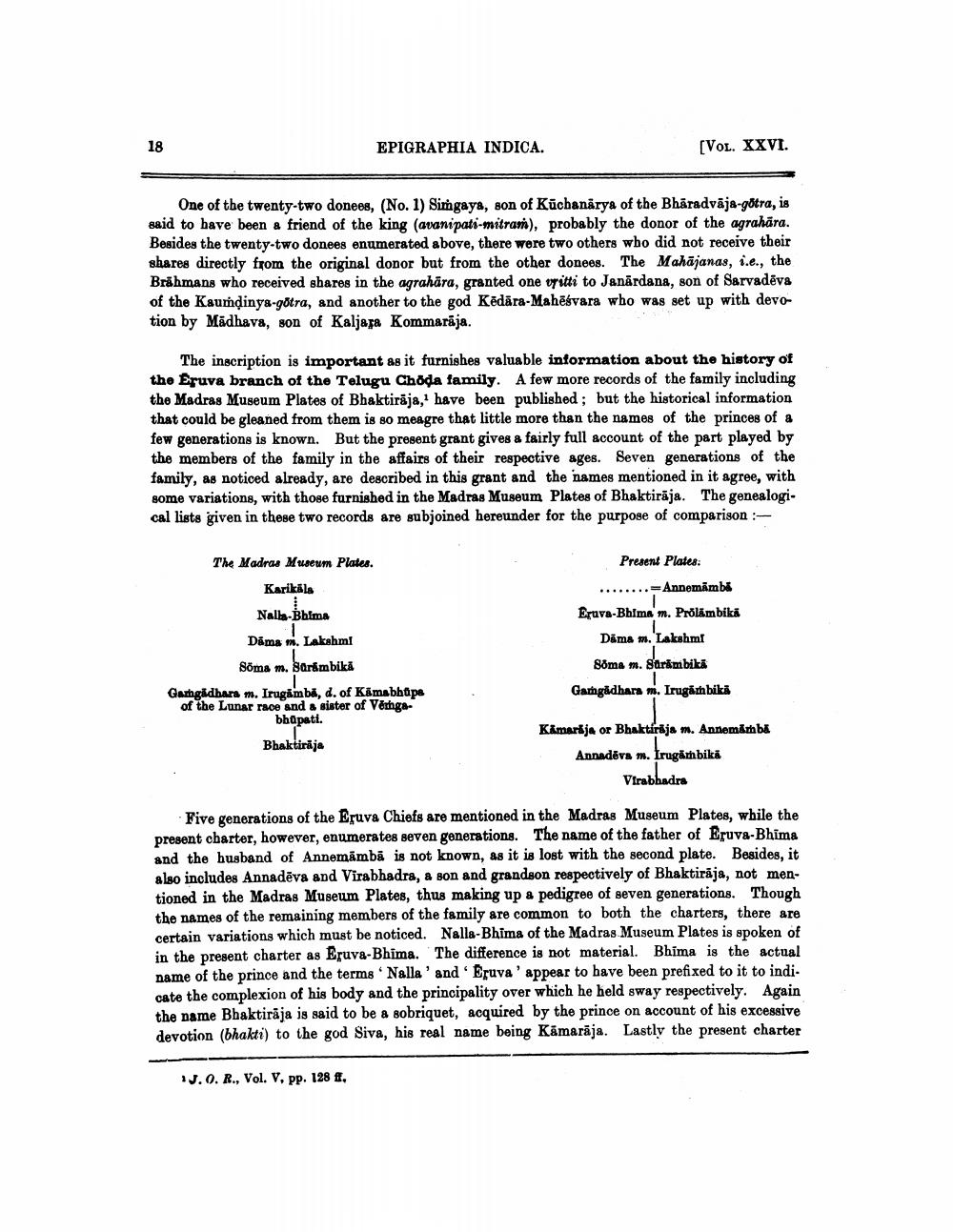________________
EPIGRAPHIA INDICA.
(VOL. XXVI.
One of the twenty-two donees, (No. 1) Simgays, son of Kūchanarya of the Bhāradvāja-gotra, is said to have been a friend of the king (avanipati-mitran), probably the donor of the agrahāra. Besides the twenty-two donees enumerated above, there were two others who did not receive their shares directly from the original donor but from the other donees. The Mahājanas, i.e., the Brahmans who received shares in the agrahāra, granted one writti to Janardana, son of Sarvadēva of the Kauṁdinya-gotra, and another to the god Kēdāra-Mahēsvara who was set up with devotion by Madhava, son of Kaljaja Kommarāja.
The inscription is important as it furnishes valuable information about the history of the Eruva branch of the Telugu Choda family. A few more records of the family including the Madras Museum Plates of Bhaktiraja, have been published; but the historical information that could be gleaned from them is so meagre that little more than the names of the princes of a few generations is known. But the present grant gives a fairly full account of the part played by the members of the family in the affairs of their respective ages. Seven generations of the family, as noticed already, are described in this grant and the names mentioned in it agree, with some variations, with those furnished in the Madras Museum Plates of Bhaktirāja. The genealogical lists given in these two records are subjoined hereunder for the purpose of comparison
Present Plates: ........=Annemámbá Eruva-Bhima m. Prolambika
The Madras Museum Plates.
Karikals Nalla-Bhima Dáma m. Lakshmi
Söma m. Sarimbika Gangadhara m. Irugamba, d. of Kåmabhips of the Lunar race and a sister of Vérnga
bhupati. Bhaktiraja
Dama m. Lakshmi
88ma m. Sarambika Gangadhara . Irugåth biki
Kimarija or Bhaktáraja m. Annemin ba Annadēvs m. Irugarh bika
Virabhadra
Five generations of the Eruva Chiefs are mentioned in the Madras Museum Plates, while the present charter, however, enumerates seven generations. The name of the father of Eruva-Bhima and the husband of Annemámbā is not known, as it is lost with the second plate. Besides, it also includes Annadēva and Virabhadra, a son and grandson respectively of Bhaktirāja, not mentioned in the Madras Museum Plates, thus making up a pedigree of seven generations. Though the names of the remaining members of the family are common to both the charters, there are certain variations which must be noticed. Nalla-Bhima of the Madras Museum Plates is spoken of in the present charter as Eruva-Bhima. The difference is not material. Bhima is the actual name of the prince and the terms Nalla' and 'Eruva 'appear to have been prefixed to it to indi. cate the complexion of his body and the principality over which he held sway respectively. Again the name Bhaktiraja is said to be a sobriquet, acquired by the prince on account of his excessive devotion (bhakti) to the god Siva, his real name being Kamarāja. Lastly the present charter
*.0. R., Vol. V, pp. 128 ff,




